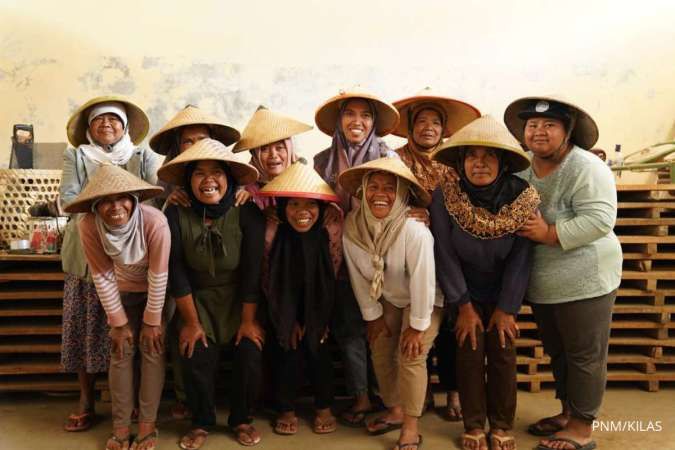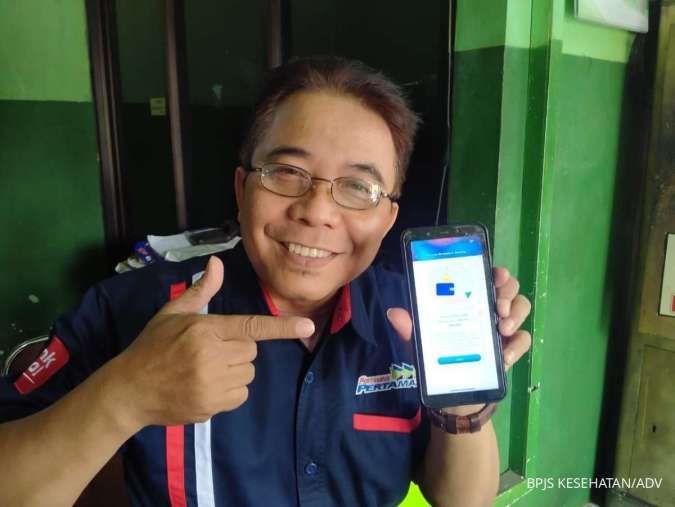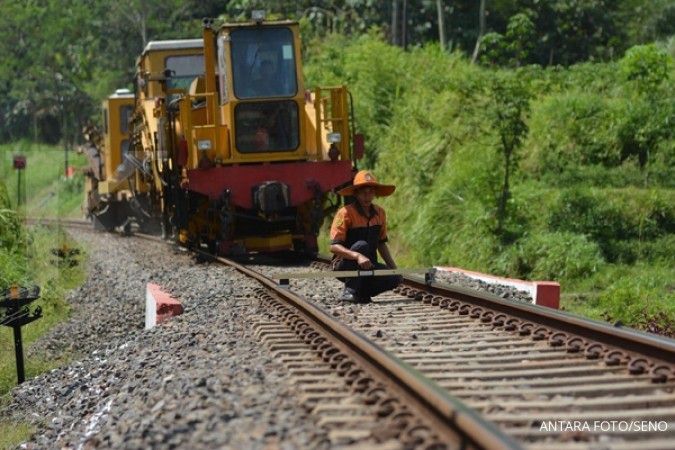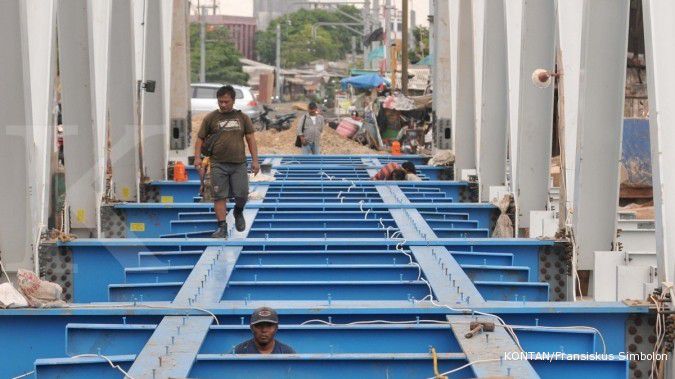JAKARTA. The Transportation Ministry is preparing a 2,168-kilometer railway linking Aceh in the northern part of Sumatra to Lampung on the southern tip of the country’s longest island as part of the medium-term development program. The feasibility study for the development of the Trans-Sumatra railway is expected to begin next year. According to the government’s 2015-2019 National Mid-Term Development Plan (RPJMN) draft released by the National Development Planning Board (Bappenas) last week, the 2,168-kilometer railway will stretch from Aceh to Lampung, connecting Sumatra’s major cities, seaports and airports to ease traffic and reduce logistics costs. The Transportation Ministry’s director general for railways Hermanto Dwiatmoko said that the government would prioritize the feasibility study and land-acquisition process for the Pekanbaru-Dumai section in Riau. “We’ve decided to prioritize this section because we’re planning to construct it alongside the Trans-Sumatra toll road’s Pekanbaru-Dumai section to simplify the land-acquisition process,” Hermanto told The Jakarta Post on Tuesday. “The feasibility study may take up to one year but we will speed up the land-acquisition process in cooperation with the local administration.” In October, the previous government conducted the ground-breaking ceremony of the initial 15.8-kilometer Medan-Binjai section of the 2,700-kilometer Trans-Sumatra toll road. The second stage of construction of the total 24 sections will stretch 22 km from Palembang to Indralaya in South Sumatra, and will be followed by the Pekanbaru-Dumai and Bakauheni-Terbanggi sections. President Joko “Jokowi” Widodo on Tuesday visited Lampung to review in detail the plans for the construction of the Trans-Sumatra toll road and railway. “We will start the construction of both the toll road and railway across Sumatra next year,” he said at Bakauheni port as quoted by Antara. Jokowi said he would listen to reports from the governor of Lampung regarding preparations for the development projects. He expressed hope that the planning would be closely linked with the development of long-term integration and connectivity between regions, so as to lower logistics costs. The government has set a target of reducing the country’s logistics costs from the current 23.4 percent of GDP to 19.2 percent in 2019. Finance Minister Bambang Brodjonegoro previously said that the Sumatra railway was one of the government’s priority projects to integrate freight transportation outside Java. “Sumatra has railways, but they are scattered everywhere in Medan, in Padang, in Lampung; we want to connect these railways, more for freight than for passengers,” he continued. The government will need a total of Rp 5.5 quadrillion in investment for infrastructure projects between 2015 and 2019 with Rp 283 trillion for railway development, according to Bappenas. The agency aims to complete the Rp 65 trillion Trans-Sumatra railway project by 2025. Hermanto said that the government would also prioritize the southern Java double-track railway and the Makassar-Pare-Pare railway in South Sulawesi next year. National Development Planning Minister and Bappenas chief Andrinof Chaniago said the new administration would not prioritize high-speed rail over the next five years. “High-speed rail is deemed unrealistic within the near future. We will concentrate more on the development of railways, seaports and airports,” he said recently. The Indonesian and Japanese governments had previously agreed to conduct a detailed feasibility study on adopting Japan’s Shinkansen high-speed rail technology connecting Jakarta and Surabaya. Transportation Minister Ignasius Jonan said construction of neither the Jakarta-Surabaya high-speed rail link nor the Jakarta airport express train from Halim Perdanakusuma Airport to Soekarno-Hatta International Airport would be financed from the state budget. (Nadya Natahadibrata)
Trans-Sumatra railway in sight
JAKARTA. The Transportation Ministry is preparing a 2,168-kilometer railway linking Aceh in the northern part of Sumatra to Lampung on the southern tip of the country’s longest island as part of the medium-term development program. The feasibility study for the development of the Trans-Sumatra railway is expected to begin next year. According to the government’s 2015-2019 National Mid-Term Development Plan (RPJMN) draft released by the National Development Planning Board (Bappenas) last week, the 2,168-kilometer railway will stretch from Aceh to Lampung, connecting Sumatra’s major cities, seaports and airports to ease traffic and reduce logistics costs. The Transportation Ministry’s director general for railways Hermanto Dwiatmoko said that the government would prioritize the feasibility study and land-acquisition process for the Pekanbaru-Dumai section in Riau. “We’ve decided to prioritize this section because we’re planning to construct it alongside the Trans-Sumatra toll road’s Pekanbaru-Dumai section to simplify the land-acquisition process,” Hermanto told The Jakarta Post on Tuesday. “The feasibility study may take up to one year but we will speed up the land-acquisition process in cooperation with the local administration.” In October, the previous government conducted the ground-breaking ceremony of the initial 15.8-kilometer Medan-Binjai section of the 2,700-kilometer Trans-Sumatra toll road. The second stage of construction of the total 24 sections will stretch 22 km from Palembang to Indralaya in South Sumatra, and will be followed by the Pekanbaru-Dumai and Bakauheni-Terbanggi sections. President Joko “Jokowi” Widodo on Tuesday visited Lampung to review in detail the plans for the construction of the Trans-Sumatra toll road and railway. “We will start the construction of both the toll road and railway across Sumatra next year,” he said at Bakauheni port as quoted by Antara. Jokowi said he would listen to reports from the governor of Lampung regarding preparations for the development projects. He expressed hope that the planning would be closely linked with the development of long-term integration and connectivity between regions, so as to lower logistics costs. The government has set a target of reducing the country’s logistics costs from the current 23.4 percent of GDP to 19.2 percent in 2019. Finance Minister Bambang Brodjonegoro previously said that the Sumatra railway was one of the government’s priority projects to integrate freight transportation outside Java. “Sumatra has railways, but they are scattered everywhere in Medan, in Padang, in Lampung; we want to connect these railways, more for freight than for passengers,” he continued. The government will need a total of Rp 5.5 quadrillion in investment for infrastructure projects between 2015 and 2019 with Rp 283 trillion for railway development, according to Bappenas. The agency aims to complete the Rp 65 trillion Trans-Sumatra railway project by 2025. Hermanto said that the government would also prioritize the southern Java double-track railway and the Makassar-Pare-Pare railway in South Sulawesi next year. National Development Planning Minister and Bappenas chief Andrinof Chaniago said the new administration would not prioritize high-speed rail over the next five years. “High-speed rail is deemed unrealistic within the near future. We will concentrate more on the development of railways, seaports and airports,” he said recently. The Indonesian and Japanese governments had previously agreed to conduct a detailed feasibility study on adopting Japan’s Shinkansen high-speed rail technology connecting Jakarta and Surabaya. Transportation Minister Ignasius Jonan said construction of neither the Jakarta-Surabaya high-speed rail link nor the Jakarta airport express train from Halim Perdanakusuma Airport to Soekarno-Hatta International Airport would be financed from the state budget. (Nadya Natahadibrata)




